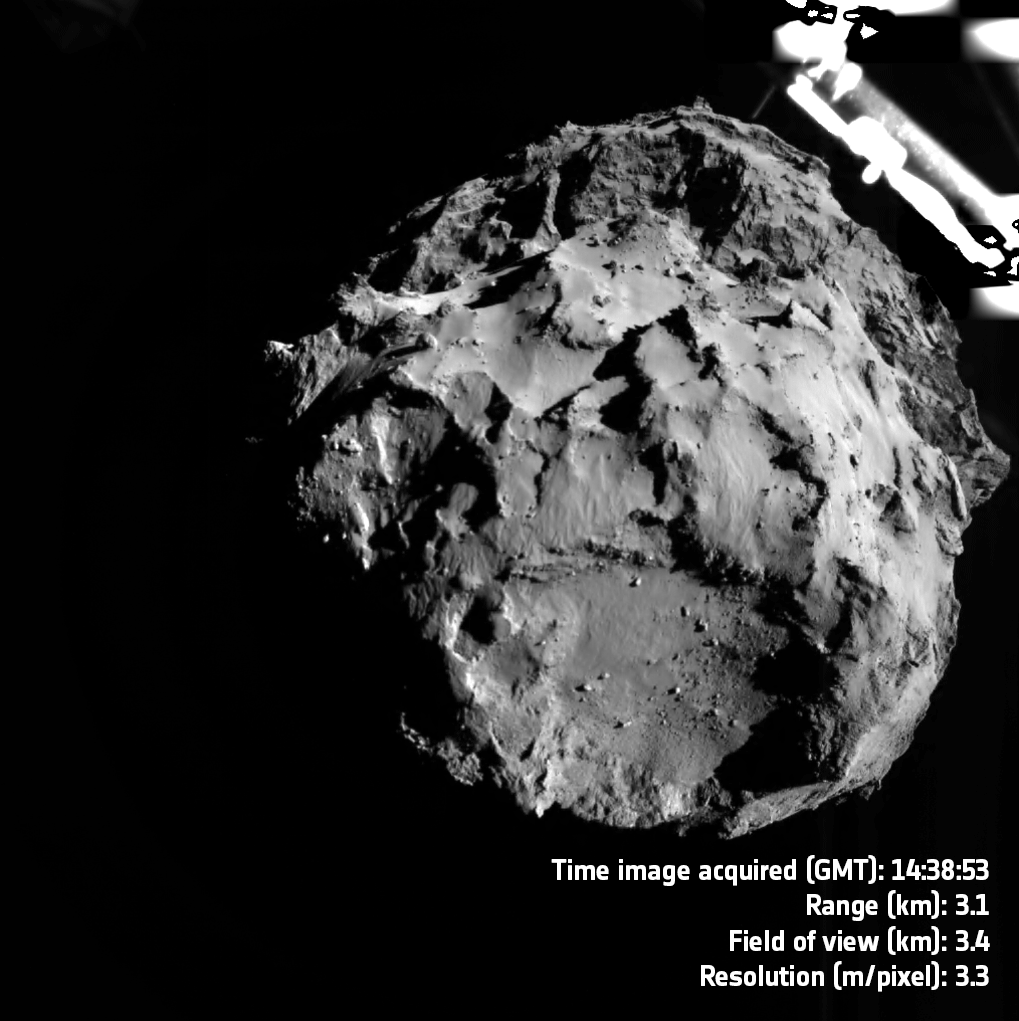
Welcome to a comet
Philae’s touchdown at Agilkia was spot-on. The sensors on Philae’s feet felt the touchdown vibrations, generating the first recording of contact between a human-made object and a comet. But it soon became clear that Philae’s harpoons hadn’t fired and it had taken flight again.
In the end Philae made contact with the surface four times. Thanks to an automatic sequence that was triggered by the first touchdown signal, Philae’s instruments were operating while in flight, collecting unique data that would later yield important results. It was also an unexpected bonus that data were collected at more than one location, providing the first direct measurements of surface characteristics and allowing comparisons between the touchdown sites.
For example, Philae ‘felt’ the difference in surface texture and hardness as it bounced from one site to another. At the first landing site, it detected a soft layer several centimetres thick, milliseconds later encountering a much harder layer.
After colliding with a cliff, Philae scraped through its second touchdown site, providing the first in situ measurement of the softness of the icy-dust interior of a boulder on a comet. The simple action of Philae ’stamping’ an imprint in billions-of-years-old ice revealed the boulder to be fluffier than froth on a cappuccino, equivalent to a porosity of about 75%.
Philae then ‘hopped’ about 30 metres to the final touchdown site, named Abydos, where its CIVA cameras provided the first image of a human-made object touching a 4.6 billion year old Solar System relic. The exact location on the comet would remain hidden from view for almost two years.



